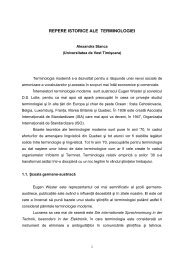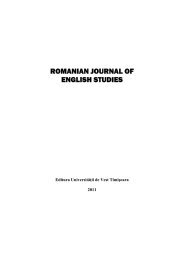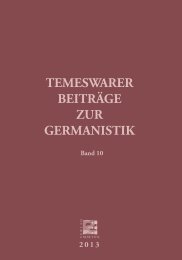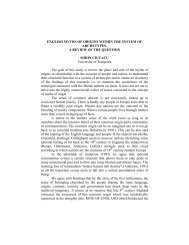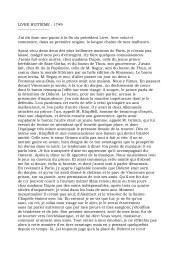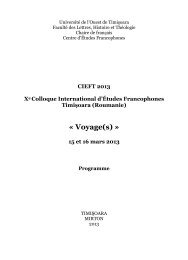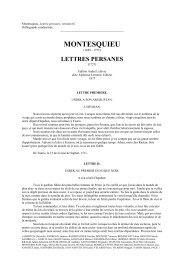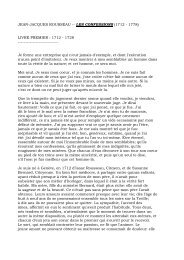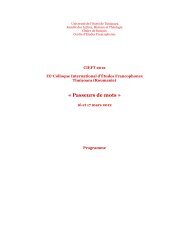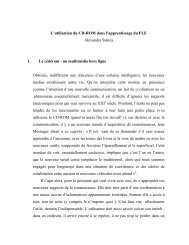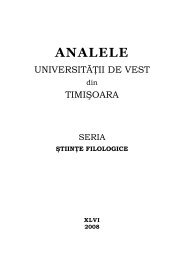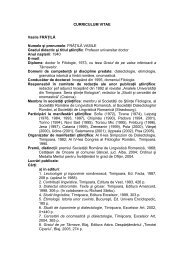TRANSLATION AND MEANING: A CULTURAL- COGNITIVE ...
TRANSLATION AND MEANING: A CULTURAL- COGNITIVE ...
TRANSLATION AND MEANING: A CULTURAL- COGNITIVE ...
You also want an ePaper? Increase the reach of your titles
YUMPU automatically turns print PDFs into web optimized ePapers that Google loves.
communicator and the audience, which constitute, roughly, the cognitive<br />
environment of an individual (Sperber and Wilson 1986:39).<br />
Interpretive resemblance between utterances (or any representation<br />
with a propositional form) means that the two representations share at least<br />
a subset of their explicatures and implicatures in a context (Wilson and<br />
Sperber 1988:138). Translation can then be seen as the act of<br />
communicating in the secondary context an informative intention that<br />
interpretively resembles the original one as closely as possible under the<br />
given conditions. Thus the principle of relevance in translation becomes a<br />
presumption of optimal resemblance: the translation is “(a) presumed to<br />
interpretively resemble the original […] and (b) the resemblance it shows is<br />
to be consistent with the presumption of optimal relevance” (Gutt<br />
1991:101). In other words: the translation should resemble the original in<br />
such a way that it provides adequate contextual effects and it should be<br />
formulated in such a manner that the intended interpretation can be<br />
recovered by the audience without undue processing effort.<br />
3. Translation operations<br />
There are four basic operations defined by the four possible<br />
configurations in which the logical and encyclopaedic meanings of an<br />
expression may be conveyed in translation. These configurations can be<br />
illustrated in the following way: (1) [+L, +E], (2) [+L, -E], (3) [-L, +E] and<br />
(4) [-L, -E], where L stands for logical meaning and E, for encyclopaedic<br />
meaning.<br />
(1) Transference, as Catford puts it, is “an operation in which the TL<br />
text, or, rather, parts of the TL text, do have values set up in the SL: in other<br />
words, have SL meanings” (Catford, 1965:43, italics as in original). In<br />
simple words, this is when we decide to incorporate the SL expression<br />
unchanged into the TL text; either because it only contributes its referent to<br />
the meaning of the utterance, or because this makes possible the recovery in<br />
the target text of some relevant assumptions, even though at the cost of an<br />
increased level of processing effort, which would not otherwise be<br />
accessible in the target cultural context.<br />
(2) Translation, in the proper sense, will mean the process of using a<br />
‘dictionary equivalent’ of the original. In relevance-theoretic terms this<br />
means rendering the SL expression by a TL expression which, preserving<br />
the logical content of the original, gives rise to the same relevant analytic<br />
implications in the target text as the original did in the source text (but<br />
which, by the same token, may activate different encyclopaedic assumptions<br />
in a secondary context).



